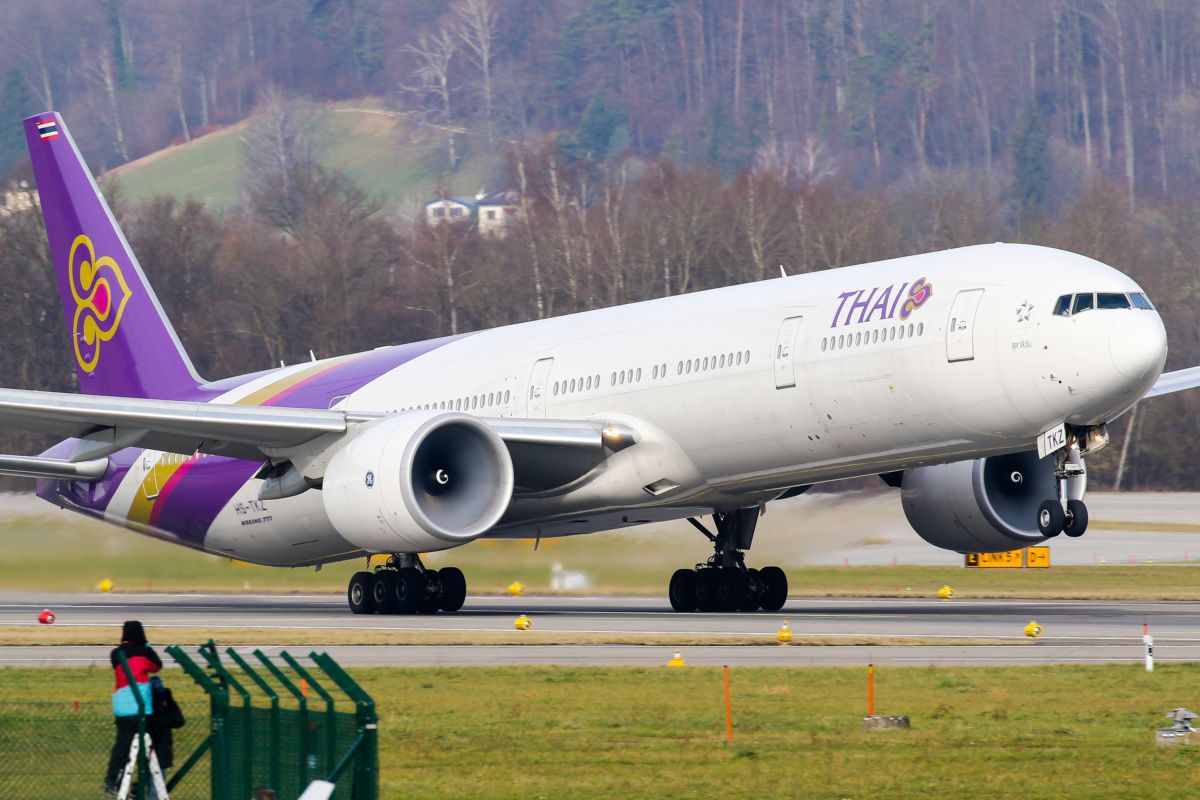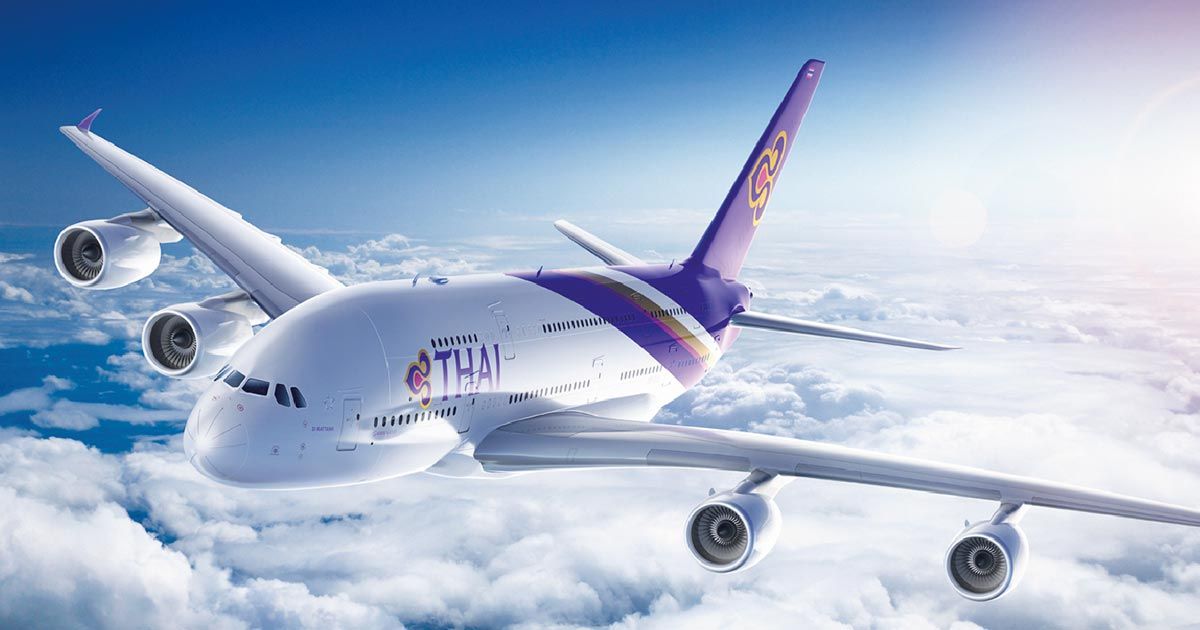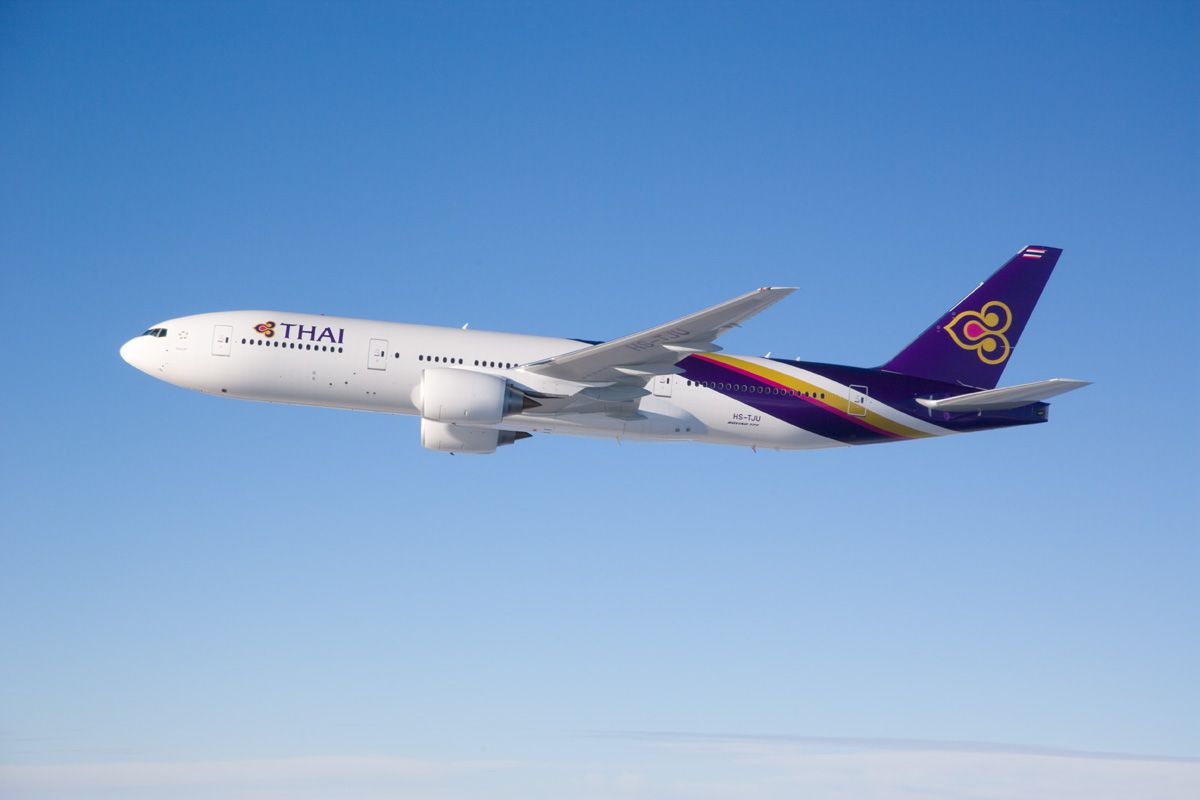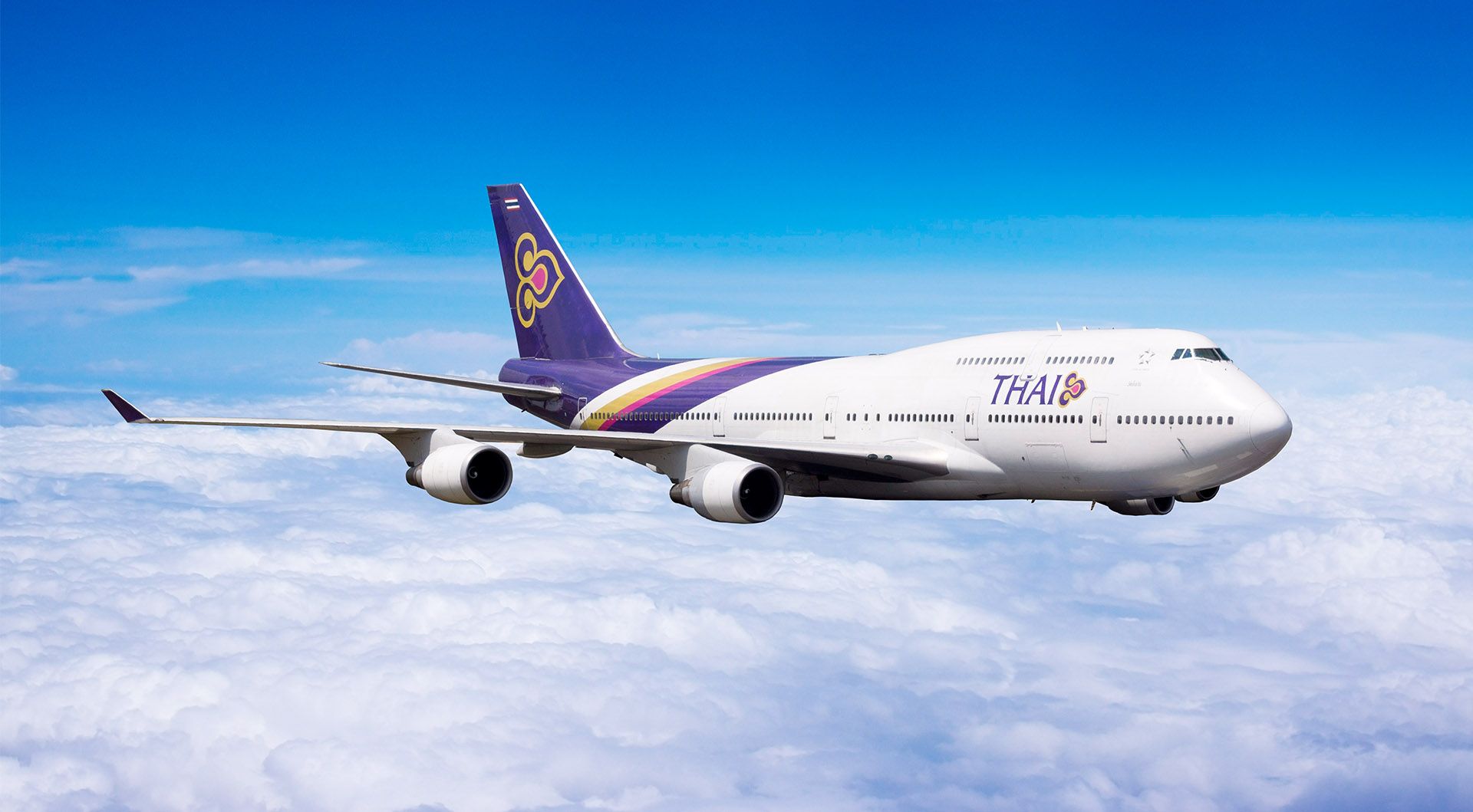The pandemic and resulting travel restrictions have had a devastating toll on the Thai Airways fleet. Previously an operator of the mighty Boeing 747-400 and the superjumbo Airbus A380, the Thai operator's collection of aircraft has been significantly reduced due to suppressed travel activity. So, with its big quadjets unlikely to return, what is the current state of the Thai Airways fleet? Let's examine where things now stand with today's article.
The Thai Airways fleet at a glance
According to Planespotters.net data, Thai Airways currently has a fleet of 43 aircraft. However, the situation isn't completely black and white as six of these 43 jets are currently listed as parked, while the airline's "historical" fleet list a large number of stored aircraft. While sometimes airlines make it clear that aircraft retirements are permanent, we've learned in the past year or so that there's always room for change. Indeed, there's always a chance that jets can be pulled out of retirement should the right circumstances come about. This phenomenon is best exemplified by Qatar Airways changing course on its A380 retirement, as well as Lufthansa planning to do the same with its own A380s over the next year.
However, before we digress too far, let's look at the 43 aircraft marked as part of the current Thai Airways fleet:
- 12x Airbus A350-900s
- 6x Boeing 777-200s
- 17x Boeing 777-300ERs
- Six Boeing 787-8s
- and two Boeing 787-9s
While our list breaks down into five aircraft variants, the airline really only operates three types of aircraft: The Airbus A350, the Boeing 787, and the Boeing 777. Having once operated the A380, 747, A330, and A340, our current list shows just how much change Thai Airways has experienced over the past six or so years. At the time of writing this article, some of the airline's A330s are due to be re-activated, which will make the fleet slightly more diverse than its current state.
Twinjet storage...and reactivation
Thai Airways' fleet of Airbus A330-300s has been fully grounded since February 2021. It was at that time that the airline's last two remaining A330-300s were sent to storage. However, between March and June 2020, the carrier moved a total of 12 A330-300s into storage. Sadly, these jets have been in this state of inactivity ever since.
Pre-pandemic, Thai Airways had a fleet of 15 A330-300s with an average age of 11 years with some of these being very young aircraft. For example, the jet registered HS-TBG is currently about nine and a half years old. While the majority of the jets are stored at Bangkok's Suvarnabhumi airport, at least three are already in deep storage in France while some others are stored in Hong Kong.
As reported by Simple Flying on July 12th of this year, Thai CCO Nond Kalinta recently told media outlet Nation Thailand that five of the airline's aircraft will return to action. This will see three A330-300s and two 777-200s brought out of long-term storage for the busy summer travel season. When it comes to the 777-200s, it appears that the airline has already pulled these out of storage, although they are marked as parked at the time of publication. The two 777-200s are registered HS-TJR and HS-TJU and were stored at Bangkok airport at the end of March 2020.
Goodbye to the jumbo jets
Sadly, all signs point to a more permanent retirement for the 747s and A380s stored by Thai Airways. Prior to the pandemic, the airline had been operating six Airbus A380s as well as nine Boeing 747-400s. All of these large aircraft were sent into storage over the course of 2020.
While many of the airline's now-retired 747-400s are between 20 and 30 years of age, the six A380s are currently between eight and nine years old. Once the flagship type for the Thai Airways fleet, the Airbus A380s sported a three-class configuration with 12 seats in first, 60 in business, and 435 in economy. While the majority of the superjumbos are stored at Bangkok Suvarnabhumi, two are listed as being stored at U-Tapao–Rayong–Pattaya International Airport.
While it's been some seven years now, it's worth mentioning that the Thai Airways fleet once included as many as 10 Airbus A340s. In 2012, the airline's four A340-500s were retired while its six -600s were phased out in 2015.
The switch to twinjets
Like essentially all airlines around the world, the pandemic had a severely negative financial impact on Thai Airways. By July 2020, Thai Airways had defaulted on over $3bn worth of debt and suspended most of its operations. The carrier had already been facing a number of problems. This included stiff competition from low-cost carriers in the region, but also accusations of mismanagement, cronyism, and waste. The onset of COVID certainly put it over the edge.
Thus, with expenditures severely overshadowing revenues, the airline was forced to file for bankruptcy protection and undergo a rigorous restructuring process. The process of restructuring the airline began in May 2020 when the Thai Government sold its stake in the struggling carrier. It's this ongoing process of restructuring that has seen the airline pursue a smaller, simpler, and more efficient fleet of aircraft. Despite their reduced capacity, these long-haul jets are some of the most efficient aircraft on the market, helping the airline to better control its operating costs. Indeed, the average age of the 43 aircraft listed currently sits at just below eight years. Some of its youngest aircraft are its A350-900s and 787-9s, which average about five years.
Despite the youthfulness of its Dreamliners and A350s, a few of its Boeing 777s are by far the airline's newest jets. Amid its fight to control costs and financially recover, the airline still managed to take delivery of new aircraft earlier this year. It was throughout the month of April 2022 that three 777-300ERs were delivered to the airline from Boeing facilities in Everett, Washington. Two of the aircraft were delivered simultaneously at the start of April and are registered HS-TTA and HS-TTB. The third jet was delivered later in the month and is registered HS-TTC. While Thai Airways had been in discussions with Boeing about canceling its order for the three 777s, this never materialized, and Boeing ultimately delivered as per its contract.
Thai Airways' ongoing sell-off
As part of its bid to raise cash, Thai Airways has been selling parts of its fleet and inventory piece by piece. Indeed, one of its largest sale campaigns took place in November of 2020, when it announced its plan to sell a total of 34 aircraft, including its fleet of Boeing 747s. Also up for sale were a number of 777s, A340s, 737-400s and a lone A300. At the same time, the media outlet Thai PBS World reported that the airline was selling off stocks of its operational inventory, including salt and pepper shakers, wine glasses, seat covers, and even aircraft tires. We had also reported at the time that the airline was even selling some of its alcohol inventory, with bottles of Dom Perignon and Veuve Cliquot up for sale.
The following month, the airline went a step further and put two A380s up for sale. Registered HS-TUE and HS-TUF, these jets were the last to join the fleet in late 2013. While the pair of superjumbos were posted to a website called Thai Aircraft Trading, it doesn't appear that there have been any takers for the jets. With over a year-and-a-half now passed, both aircraft remain in storage.
Earlier this year, the airline put some of its aircraft seats, as well as a 737-400 airframe up for sale on Facebook Live. The following was part of the airline's write-up in trying to convince customers on why they should purchase the airframe:
"One & Only... the opportunity to own an aircraft with a long history with Thai Airways. Inviting business owners or those interested to bid on airframe B737-400. You can make it as an airplane cafe to attract customers or set it up in a cool resort. Bid where you want."
Shortly after, in June 2022, the airline put up more seats for sale on Facebook Live. This time, the seats were from its Boeing 747s and included both first class and economy class seats manufactured by Koito and Recaro.
Stay informed: Sign up for our daily and weekly aviation news digests.
On the slow path to recovery
As you can see by the recent Thai Airways news we've discussed, the airline is working hard to become a more efficient business while trying to liquidate much of its unnecessary inventory to raise some much-needed cash.
Compared to many of the airlines we've covered in this fleet series, Thai Airways has had one of the most dramatic transformations over a short period of time. Now, with a simpler and more efficient collection of aircraft, combined with the easing of travel restrictions across Asia, we can only hope that the carrier is now on a much more promising path to recovery.
What do you think of Thai Airways' current fleet? Have you ever flown with the carrier? And do you think that there is some way that the airline could have continued operating its Airbus A380s? Let us know what you think by leaving a comment.

-1.jpeg)



_(4488455716)-1.jpeg)
-1.jpeg)


.webp)